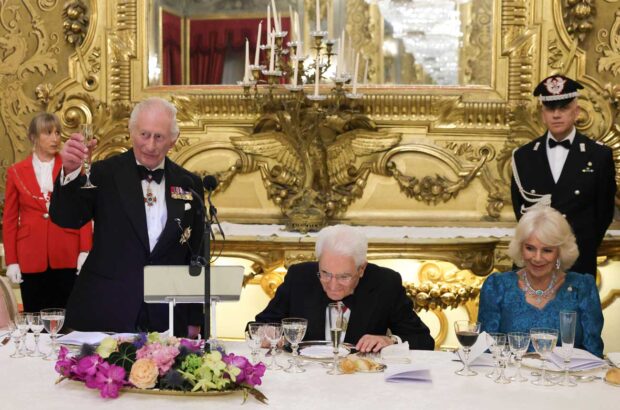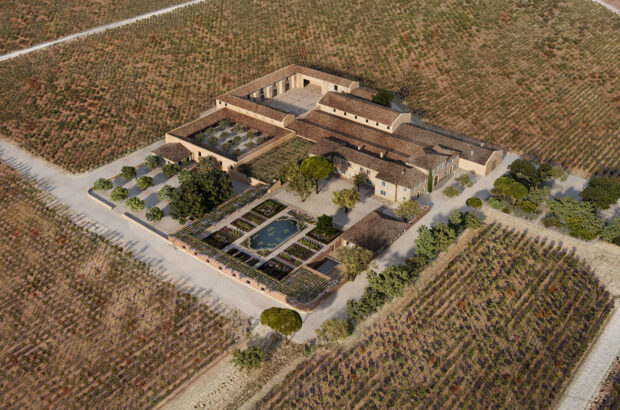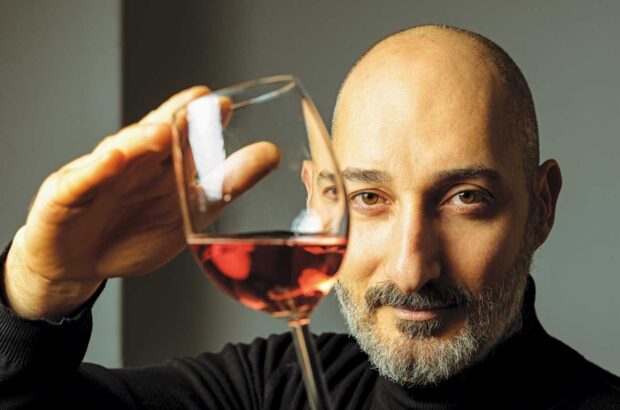The Albariño of Spain’s Rías Baixas was once a wine to drink young, but now it will last for a decade. What changed, asks Margaret Rand?
 There is something slightly perverse, one might think, in abandoning a whole range of grape varieties to concentrate on just one – and then focusing on ways of giving that one grape a variety of flavours. But that’s markets for you. if Albariño is what sells, Albariño is what growers will grow, and Loureiro, Treixadura, Caíño Blanco and the rest – not to mention the still more obscure red varieties – must sit at the back and not complain. Albariño is fortunate to have won: left to themselves, the growers of Rías Baixas might well prefer to grow hybrids.
There is something slightly perverse, one might think, in abandoning a whole range of grape varieties to concentrate on just one – and then focusing on ways of giving that one grape a variety of flavours. But that’s markets for you. if Albariño is what sells, Albariño is what growers will grow, and Loureiro, Treixadura, Caíño Blanco and the rest – not to mention the still more obscure red varieties – must sit at the back and not complain. Albariño is fortunate to have won: left to themselves, the growers of Rías Baixas might well prefer to grow hybrids.
Hybrids, actually, are probably the best adapted to the local weather. in nearby santiago de Compostela, they tell you, it either has rained, is about to rain, or is raining. ‘in 1896, mildew killed 99% of the vines here,’ says Eulogio Pomares Zarate, owner of Zarate. ‘The vineyard went from 25,000 hectares to 250ha. We didn’t start using copper sulphate against mildew until the 1920s. Phylloxera couldn’t survive in our acidic, sandy soils, but we had 25 years of mildew.’ hybrids are tougher when it comes to mildew; some 3-4 million litres of hybrid red are grown every year, he says, but it doesn’t get bottled.
What does get bottled is Albariño. spain is mad for Albariño. And spain is right: it tastes of salt and ripe citrus with a touch of apricot. it’s aromatic and mineral, structured and creamy, long and long- lived. The best wines can live – and improve – for 10 years and taste tight, mineral and honeyed at the end of it. it’s like grown-up Viognier with acidity and without the blowsiness. Twenty years ago it was regarded as a wine to drink young and without too much thought; now it’s at a very different level. What happened?
A damp landscape
Rías Baixas is right on the Atlantic, tucked in over the bit of Portugal that makes Vinho Verde, where Albariño becomes Alvarinho. The land looks exactly the same both sides of the border: it’s a granite landscape, all pine and heath, morning glory and blue hydrangeas, and eucalyptus groves that fade to a ghostly grey behind the frequent curtains of rain. The rain is sudden and local, and clears as quickly as it starts. smallholders grow their vines on high pergolas over cabbages, just as they do in Portugal: the pergolas give enormous crops but have the virtue of keeping the grapes well away from the damp ground.
Large crops used to be considered a good thing, when the wine was light and for early drinking. Now training on wires is an alternative, but wires are certainly not driving the pergolas out. You get one gramme per litre less acidity with wires, reckons Emilio Rodriguez, technical director of Terras gauda, and half a per cent more alcohol, because the grapes get more sun and more ventilation: ‘it’s a lower crop, but better quality.’ But he also says that finding differences of aroma and flavour between the two training methods is more difficult. ‘The most important thing is that in a complicated vintage with poor ripening, you get better results with vines trained on wires,’ he says.
This evening-out of vintage variation in an erratic climate, by bringing the worst years up to the level of better ones, is one of the achievements of better viticulture here. Climate change has helped, too: all the growers are very pleased with climate change. ‘Twenty-five years ago,’ says Christina Mantilla, winemaker at Pazo San Mauro, ‘we were getting wines with 10% alcohol and 12g of acidity. Now we’re getting 12% alcohol and 9-10g of acidity. We love climate change. But it’s better viticulture and winemaking too, and greater vine age.’ ‘It used to rain all summer,’ agrees winemaker Javier Peláez of Marqués de Vizhoja. ‘It used to be almost impossible to get grapes to ripeness, they were so acidic. Now we have to pick earlier. Drought used to be unheard of, but now it can happen.’
Regional differences
The Rías Baixas DO was established in 1988. It’s divided into five areas: the Salnes Valley, which is effectively entirely Albariño; O Rosal, Soutomaior, Ribeira do Ulla and Condado do Tea, where you might find small percentages of Treixadura, Loureiro, Caíño Blanco and others in the blend. But everywhere, if it says Albariño on the label, it must be 100% Albariño. So naturally you want to make your Albariño different from everyone else’s.
The regions have their differences. Condado do Tea is the warmest and driest region, and gives slightly riper grapes with slightly less malic acid. The average temperature over the year is 15oC in Rosal, whereas in the Salnes Valley it’s 14.2oC. Rainfall is pretty much the same in all, at 1,600– 1,800mm per year. Some vineyards are more inland than others, but the real differences are those of latitude: the Salnes Valley is the northerly limit for ripening. This is where you find the real acidity. Condado do Tea is in the south, on the Portuguese border, and if you listen closely I swear you’ll hear them pronounce Albariño as Alvarinho.
The differences in climate may seem small, but they have implications for winemaking, and for flavour. The cooler your site, or the year, the higher your acidity will be, and the more likely you’ll be to consider doing a bit of malolactic fermentation to soften it. But not too much: everybody wants purity and minerality in their wines, and most don’t want too much of the buttery, lactic notes that come with the malolactic. So they may only do it in certain years, or for a small percentage of the blend. There are more ingenious ways of lowering acidity: cold stablisation will bring it down by about one gramme per litre. (Some producers still add shellfish shells to the soil, to raise the pH, which is very low here, at around five. Adding oyster or clam or mussel shells – which are in abundance, since farming them is big business in the rías, the steep-sided fjords that give the region its name – can raise it to eight or nine. That in itself won’t affect the acidity of the wine, but it will certainly increase the ability of the vine to take nutrients from the soil.) Skin contact – a ‘cold soak’ for several hours before pressing – will edge the acidity down by another gramme or more, while giving you greater aromas.
Divergent styles
Wine styles diverge in other ways, too, encouraged by greater ripeness. You can opt for unadorned austerity: just the wine, with nothing fancy. ‘I stopped skin maceration in 2000,’ says Eulogio Pomares Zarate. ‘I want terroir expression, not extra power and exuberance.’ Palacio de Fefinanes abjures skin contact because it doesn’t want the tannins that go with it; nor does it want the extra aromas. You can have some wood ageing, which doesn’t sound like a great idea for an aromatic, mineral grape. Or you can go for long lees ageing, with or without lees-stirring. You can also make it sparkling, though it looks as though other grapes do this better. You can even try making it sweet, though you won’t get the DO for that. The main choice seems to be oak or lees ageing; and oak-aged Albariño has a limited market. A few restaurants like it because they think it offers more food-matching potential, but most Spaniards prefer it unoaked; or so I’m told.
Yet it’s far from being a revolutionary idea. ‘Until the DO started, all Albariño in Rías Baixas was made in wood,’ says Eulogio Pomares Zarate. ‘I’ve still got some 550-litre chestnut barrels here, though I stopped using wood in 1999. The wine used to be fuller-bodied with more colour, and there was more skin maceration. Old chestnut barrels were the usual thing.’ Now it’s more likely to be French or even American oak. Agro de Bazan’s Limousin cuvée (the oak these days is actually Alliers, says export manager Jesus Alvarez) uses two-year-old, 500-litre barrels, which is not very frightening; Palacio de Fefinanes’ 1583 is fermented in oak and does the malo in oak, some of which is new, and about 10% of which is American. The former wine gains muscularity but no oak flavour; the latter is distinctly oaky, and more square in shape in the mouth.
Personally, I don’t go so much for the oaked wines. But long lees ageing can be interesting; and ‘long’ can be three months, or 30. Pazo Baion’s standard 2012 has four months’ battonage; its 2006 Condes de Alberei had three years on the lees, and was bottled unfiltered. The first is structured, deep and precise; the second is all buttered tangerines and silk, very complex. An extra six years makes a difference, too, of course, but long lees ageing increases a wine’s longevity in a way that oak ageing does not. It keeps it fresher for longer, and enables a slow development of complexity. And now that Albariño sees itself as a serious wine, longevity is important.
A top Albariño will improve for a decade. To keep it longer than that is probably pushing it, though as knowledge of specific sites increases, so will the number of exceptional wines. Jesus Alvarez of Agro de Bazan suggests 18 months after the harvest is the ideal age to start drinking it, and it doesn’t seem to go through a closed phase. Not that perverse, then.
Written by Margaret Rand







